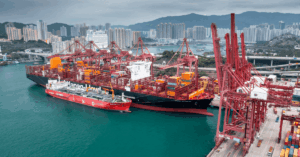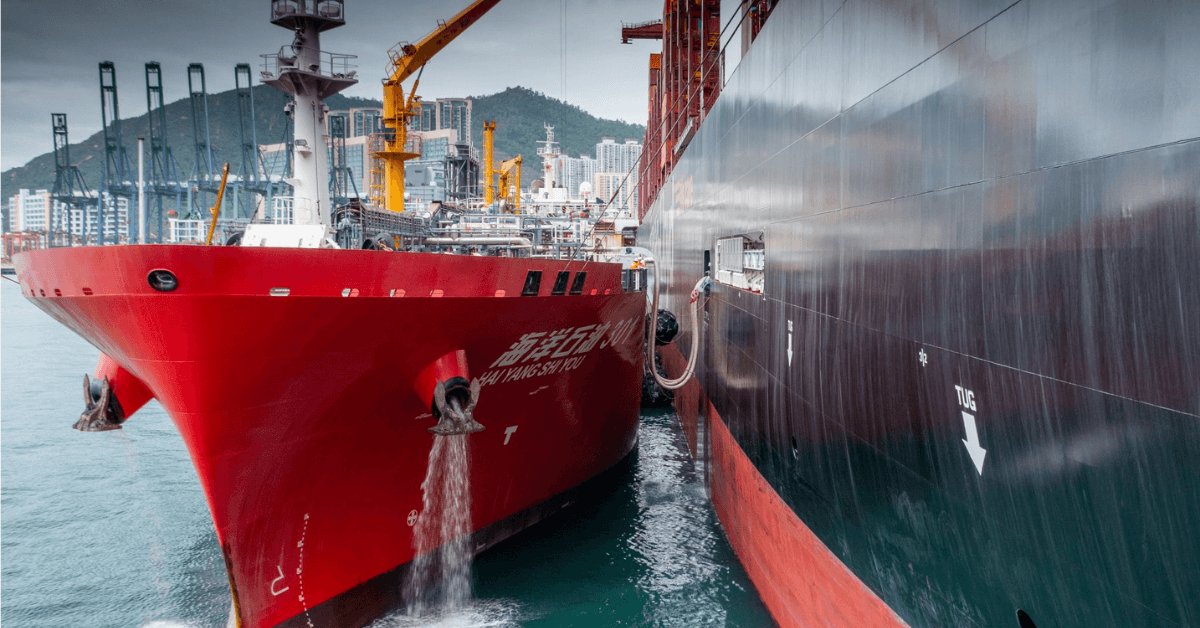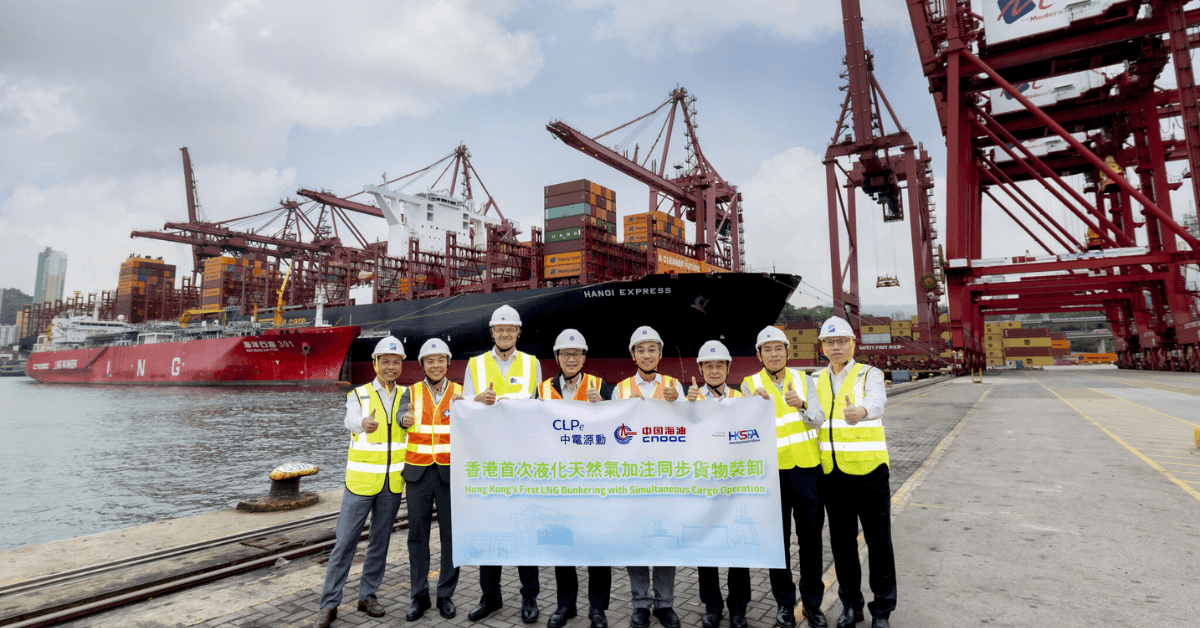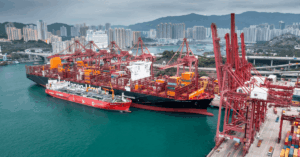
Royal Navy’s Newest Frigate Floats For First Time Under Iconic Forth Bridges
June 17, 2025
5-Star Cruise Ship Deployed By Mano Maritime To Evacuate Israelis From Cyprus
June 17, 2025

Hong Kong has completed its largest-ever liquefied natural gas (LNG) bunkering operation and its first ship-to-ship refueling combined with cargo handling.
The operation, carried out on 5 June at the Kwai Tsing Container Terminals, involved transferring around 10,000 cubic metres of LNG to Hanoi Express, a container ship owned by German shipping giant Hapag-Lloyd AG.
The LNG was supplied by CLPe in partnership with CNOOC Guangdong Water Transport Clean Energy Company Limited. The bunkering was performed by Haiyang Shiyou 301, the world’s largest LNG bunkering and transport vessel, which is owned by Chinese state energy company CNOOC.
This ship is 184.7 meters long and 28.1 meters wide, with a storage capacity of 30,000 cubic meters and a refueling rate of 1,650 cubic meters per hour.
This marked Hong Kong’s largest single LNG refueling operation to date and was the first time LNG was bunkered during simultaneous cargo loading and unloading activities in the city.
The entire bunkering and cargo operation was completed within 24 hours, significantly reducing the vessel’s port turnaround time and operating costs.

According to CNOOC, this was the largest single ship-to-ship LNG bunkering mission ever conducted in the Hong Kong Special Administrative Region. It involved injecting 4,300 tons of LNG over 8.5 hours while the container vessel was being loaded and unloaded.
LNG is considered a cleaner alternative to conventional marine fuels. The city currently serves as a major LNG bunkering point for international voyages, with more than 5,000 ocean-going vessels making port calls annually.
CNOOC currently holds international bunkering permits at seven Chinese ports, including Shenzhen in Guangdong Province and Ningbo in Zhejiang Province.
In November 2024, CLPe and CNOOC had announced plans to form a joint venture to offer LNG bunkering services in Hong Kong. The latest bunkering operation was part of that effort and acted as a pilot project under the partnership.
The Government of the Hong Kong Special Administrative Region has been actively promoting the development of a green maritime fuel industry.
Last year, it released the Action Plan on Green Maritime Fuel Bunkering. In 2024, it enacted the Shipping Legislation (Use of Fuels and Miscellaneous Amendments) Ordinance to further support the use of low-emission marine fuels.

The Secretary for Transport and Logistics, Mable Chan, credited the success of the operation to the cooperation between CNOOC and CLPe. She said that conducting bunkering alongside cargo operations using green fuels shows how different processes can work together to deliver higher efficiency and lower emissions. She added that this kind of synergy will likely encourage more LNG and green fuel services at the Hong Kong port and boost the confidence of international shipping lines.
CLP Holdings CEO T.K. Chiang highlighted Hong Kong’s strong geographical advantage and its status as one of the world’s top 10 bunkering centers. He said that the shift to low-carbon and net-zero fuels is accelerating globally, and this operation proves that Hong Kong is ready to support that transition.
Guangzhou Municipal Commerce Bureau’s Deputy Director, Wu Wei-hau, also commented on the importance of collaboration between Hong Kong and Guangzhou. He said this joint effort in green marine fuel will help improve international competitiveness in the Greater Bay Area and contribute to building a strategic foundation for future development.
CNOOC Gas and Power Group Co., Ltd’s Chief Financial Officer, Kang Huahua, said the successful operation has significantly improved Hong Kong’s LNG supply capabilities. He added that it introduces a new model for integrating green ports with modern shipping systems.
A spokesperson from the Hong Kong Seaport Alliance said the operation proved that Hong Kong can now provide world-class LNG bunkering services.
Reference: CLP
Source: Maritime Shipping News


